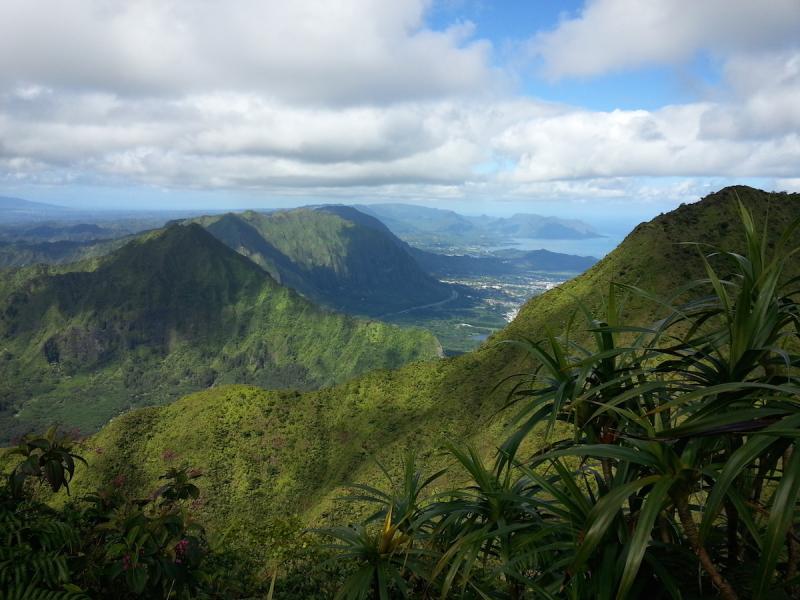Terrestrial Ecosystems
Projected climate changes will significantly alter the distribution and abundance of many native marine, terrestrial, and freshwater species in the Pacific Islands. On low islands, native vegetation and the fauna it supports may change as periodic flooding increases the salinity of groundwater. On high islands, existing climate zones are generally projected to shift upslope in response to climate change.
The ability of native species to adapt to shifting habitats will depend on the status of populations of pollinators and seed dispersers, and may be hampered by ecosystem discontinuities. Invasive plant species may gain a competitive edge over native species, as they disproportionately benefit from increased carbon dioxide, disturbances from extreme weather and climate events, and an ability to invade higher elevation habitats as climate warms.
On high islands like Hawai‘i, decreases in precipitation and baseflow are already impacting some freshwater ecosystems and aquatic species. Many Pacific Island freshwater fishes and invertebrates have oceanic larval stages in which they seasonally return to high island streams to aid reproduction. Changes in streamflow and oceanic conditions that affect larval growth and survival will alter the ability of these species to maintain viable stream populations.

